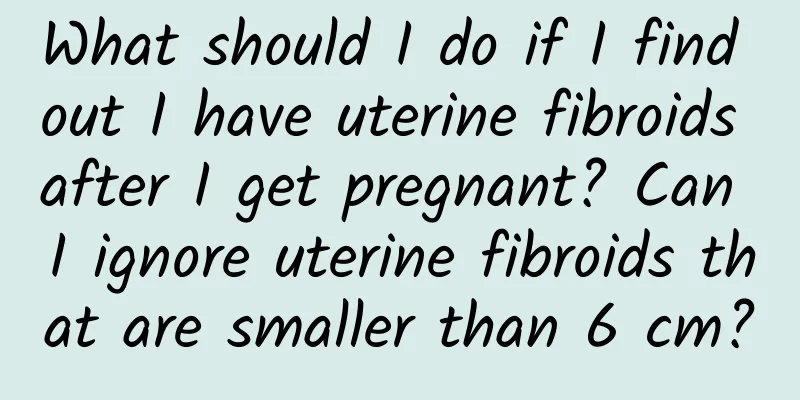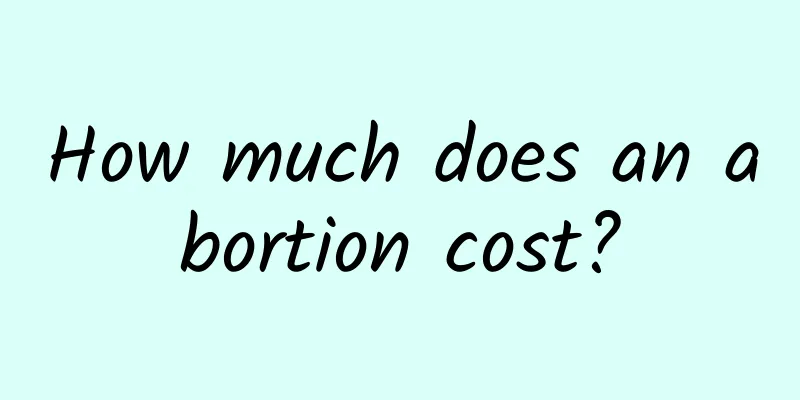At what age do uterine fibroids usually occur? At what age do uterine fibroids usually occur?

|
At what age do uterine fibroids commonly occur? This is a question that many female friends often pay attention to. Uterine fibroids are common benign tumors in women. They grow on the inner wall of the uterus and will appear as age increases. So, at what age are women more likely to get uterine fibroids? This article will answer this question in detail. We need to understand the characteristics of uterine fibroids. Uterine fibroids are a type of tumor formed by endometrial cells, which usually grow in the muscle wall of the uterus. The occurrence of uterine fibroids is related to women's hormone levels, especially estrogen. In women of childbearing age, estrogen levels are relatively high, which is also one of the main causes of uterine fibroids. 1. Pre-pregnancy period: The occurrence of uterine fibroids is related to the pre-pregnancy period. According to research, women aged 25-40 are at the peak of uterine fibroids. Women in this age group are at their best reproductive age, have higher estrogen levels, and are more likely to get uterine fibroids. 2. Before and after menopause: After women enter menopause, their ovarian function begins to decline and estrogen levels gradually decrease. At this time, the incidence of uterine fibroids will decrease, but it does not mean that they will disappear completely. Studies have shown that women aged 50-55 may still have uterine fibroids, although the incidence is lower. Therefore, women before and after menopause need to continue to be vigilant and have regular gynecological examinations. 3. Pregnancy: During pregnancy, due to the increase in progesterone levels, some existing small uterine fibroids may grow rapidly. At this time, pregnant women need to pay close attention to the condition of uterine fibroids and seek medical treatment in time to avoid adverse effects on the health of the fetus and pregnant women. It should be noted that the age of onset of uterine fibroids is related to individual differences. Some women may be diagnosed with uterine fibroids in their 20s, while some women will never get them in their lifetime. Therefore, in addition to age factors, other factors that induce uterine fibroids include: genetic factors, obesity, infertility, etc. Uterine fibroids usually have a higher incidence in women aged 25-40. But it does not mean that women of other ages will not get uterine fibroids. Therefore, regardless of age, women need to have regular gynecological examinations to detect and treat uterine fibroids in time to protect their own health. The most important thing is to maintain a positive and optimistic attitude and avoid excessive anxiety and worry, because a good attitude is also the key to maintaining good health. |
<<: What is uterine fibroids? Tell me what is wrong with uterine fibroids
Recommend
What is the cause of non-menstrual bleeding?
What is the cause of non-menstrual bleeding? Non-...
Stay away from dysmenorrhea and start with good health care methods
Although dysmenorrhea is a gynecological disease ...
Understanding the causes of chocolate cysts
Chocolate cyst is a kind of ovarian disease. Beca...
Still doing sit-ups to lose belly fat? Envy the flat belly of celebrities, learn these 8 tricks to make it tighter
Every time you watch TV or social media, you are ...
Eight Chinese herbal medicine prescriptions are effective in treating ovarian cysts
Traditional Chinese medicine believes that the oc...
What is pelvic peritonitis
Pelvic peritonitis is a disease caused by severe ...
Experts introduce common classification of cervical erosion
Clinically, different types of cervical erosion h...
What tests are needed for miscarriage
Everyone may be familiar with miscarriage. For wo...
Is it normal to have lower abdominal pain on the fourth day after an abortion?
Whether it is normal to have lower abdominal pain...
Pelvic breathing in the morning! Improve blood circulation
Stretching in the morning is very effective in pr...
Are the symptoms of hyperprolactinemia serious?
Hyperprolactinemia is the most common pituitary d...
true and false? ! Are soybean sprouts more nutritious than soybeans? Can gout patients eat it? Hou Wenyi Nutritionist Decrypted
Soybeans are rich in nutrients, containing protei...
Will taking progesterone with endometriosis make me fat?
Will taking progesterone with endometriosis make ...
What are the signs of cervical precancerous lesions?
What are the signs of cervical precancerous lesio...
A brief analysis of the etiology of cervical precancerous lesions
The treatment of cervical precancerous lesions is...









